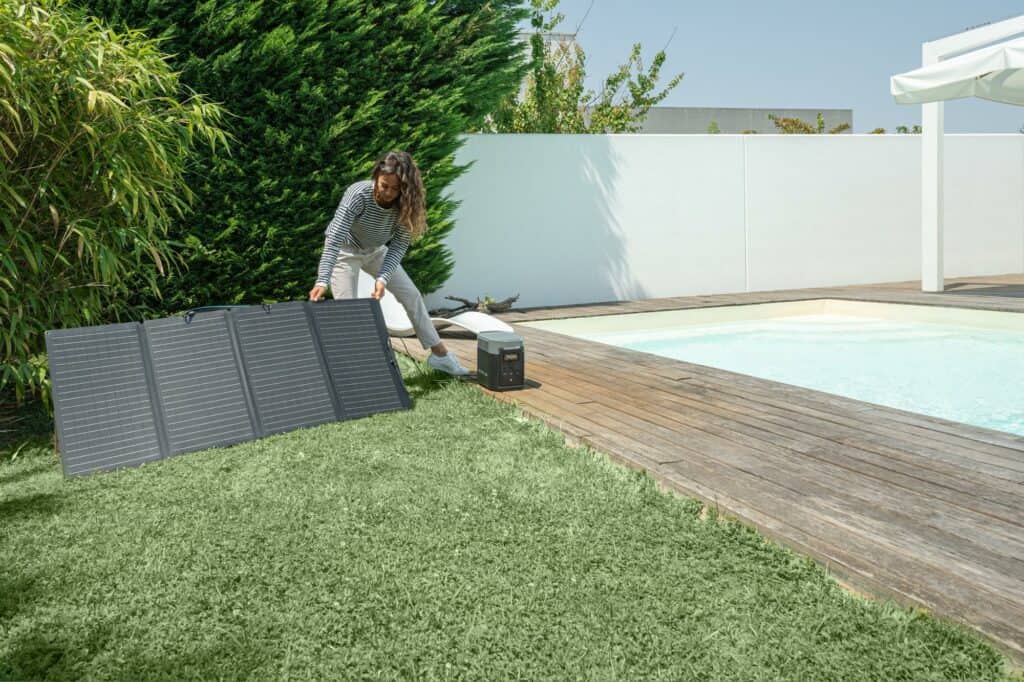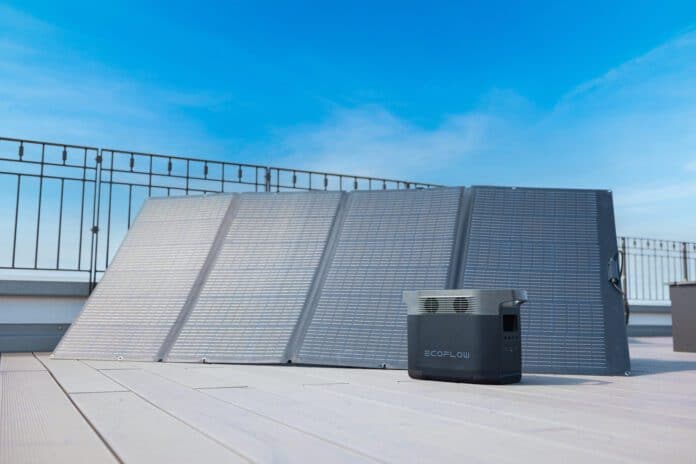The popularity of solar panels in Australia is quickly gaining pace, leading to greater affordability than ever.
You don’t need to go back too far to find a period when exorbitant costs meant solar panels were high-tech gadgets with painfully high prices. But those days are now long gone.
2022 has seen reduced costs continue, and there has never been a better time to invest in solar panels than now.
The long-term benefits of sourcing clean, renewable electricity now work hand-in-hand with affordable equipment prices and various government incentives, making solar panels an even more attractive proposition.
How Much Does a Solar Panel Cost?
Thanks partly to our sunny climate, Australia has some of the highest rates of solar panel use anywhere in the world. Roughly 30% of Australian houses use a rooftop solar installation of some kind or another. With more than 3 million solar systems in the country, we are now beginning to see a much more pronounced reduction in the price of solar panel installations than ever before.
In Australia, the cost of solar panels currently averages around $0.93 per watt, less than a third of what you would pay in the United States. A basic solar panel installation can cost you as little as $3500, though with add-ons or to create a more robust system, you can expect that figure to rise.
In most parts of Australia, you can purchase a 10kW system — including solar panels, system integration, and control panel — for between $17,500 and $20,500.
How Much Does It Cost to Install Solar Panels?
Of course, the abovementioned price will usually only cover the equipment itself, but probably not the installation. When setting up the panels onto your roof, there are two possible avenues: DIY or professional installation.
You can strap on that tool belt, dig out that ladder from the back of the shed, and do it yourself. However, you’ll need to consider whether it’s worth saving a few thousand dollars for the peace of mind of paying a professional to install it.
Some people love nothing more than getting their hands dirty with some good old-fashioned DIY. However, it’s important to stress that installing solar panels and ensuring proper setup is no walk in the park.
Solar systems often come with a dizzying array of specialist equipment, such as inverters, batteries, racking systems, and electrical hookups. The equipment required for effective installation, not to mention the apparatus that comprises the system, makes the whole process complex and time-consuming.
Some companies will include the installation in the overall price of a solar panel system. However, many will have it as an optional add-on, along with warranties and an ongoing maintenance contract.
The installation price will vary depending on the size and type of solar system and your location. Western Australia has the lowest installation rates, typically ranging from $3,600 to $3,900 for a 5 kWh system. Meanwhile, Victoria has the highest, usually between $4,500 and $5,400 for the same size system.
Factors That Determine How Much a Solar Panel Costs in Australia
It’s easy to give ballpark figures for the cost of solar panels, but in reality, many different factors determine the actual cost of your panels and solar ecosystem. Here are the main factors that will impact your overall cost.
Panel Capacity
When choosing solar panels, the most obvious point to consider is their rated power. Most panels range from 100 to 400 watts of rated power, indicating how much energy each panel can capture under ideal circumstances.
Needless to say, the higher the wattage, the greater the solar collection. The sunlight captured translates to a higher energy output for home use.
To give you a rough price difference, a single 100-watt panel will cost between $200 and $500, while a 400-watt panel will set you back between $600 and $1,500.
Cell Construction
If you’re wondering how panels with the same capacity can have such a price difference, it’s usually down to their construction and conversion rate, which we’ll come to next.
Solar panels consist of individual cells made up of thin film, monocrystalline, or polycrystalline.
Thin film is heavier and much less efficient, meaning you don’t find too many rooftop solar panels using it.
The distinction between monocrystalline and polycrystalline is where you’ll find the most significant price difference. Polycrystalline cells are the cheaper option but come with lower overall efficiency. Monocrystalline is the more energy-efficient option, but you will pay a slightly higher premium.
To understand more about the benefits of using solar panels with higher efficiency, let’s move on to that.
Conversion Efficiency Rating
Rated power is the first thing you’ll probably look for when shopping for solar panels. The second should be the conversion efficiency rating.
Solar efficiency, also known as the conversion rate, refers to the amount of sunlight converted into electricity through solar panels. There can be quite a dramatic difference between the best and worst efficiency ratings.
As you might expect, the cheapest solar panels have the lowest conversion rates. You might think you’re getting a bargain with those dirt-cheap panels. But you are substantially diminishing the amount of energy you can collect and reducing the overall benefits of going solar in the first place.
That’s why we always recommend going for the highest efficiency possible.
Solar panels in Australia typically have conversion rates of anywhere from 11% to 22%, with the different rates almost certainly having a significant bearing on the price.
Conversion rate is one area where monocrystalline solar cells outperform polycrystalline and thin film cells. For example, with EcoFlow’s portable solar panels, you’ll find monocrystalline silicon cells, which offer industry-leading conversion efficiency at 22.4%.
System Costs
Another critical point to consider when calculating overall costs is that solar panels alone cannot generate energy to be used in the home. You’ll need some configuration of an inverter, batteries, a controller, and a generator to complete your solar power system and allow you to begin reaping the benefits of Australia’s abundant solar energy.
While buying each piece of equipment separately is possible, you’ll probably find it cheaper to go for an integrated system with everything included. EcoFlow power kits come with a hub that integrates the charge controllers, battery, converter, inverter charger, and more.
Another significant benefit of purchasing a system rather than individual items is that you know that they will all integrate seamlessly. It’s not uncommon for panels and other parts of the system to operate slightly differently when purchased separately from different manufacturers, which might require more wiring and more time setting everything up.
System Installation and Labour
Labour costs will depend on the type of renewable energy system you install. As noted, you can install rooftop systems yourself, but the risks of falling or incorrect installation may make professional installation preferable.
Another option to consider is to circumvent rooftop systems altogether. EcoFlow portable solar panels come with a foldable design and kickstand case that lets you position the system for optimal light capture — and you can place them anywhere without having to set foot on a ladder!
Renewable Power Incentives
The final factor to consider is renewable power incentives, which can help ease the cost of a solar panel system.
The Australian government is offering a range of incentives to lower the overall cost of solar panels and their installation. These include interest-free loans to help cover the cost and excellent discounts on products that can make installing that solar system even more attractive than it already was.

How Do I Calculate How Many Solar Panels I Need?
Knowing the differences between solar panels is all well and good, but how do you calculate how many of them you’ll need for your home?
The first thing you’ll need to do is calculate your daily home energy consumption. Energy needs can vary enormously depending on the size of the home, the number of people in the household, what you use your electricity for, and how often you use it.
Many energy providers will put your average daily use on your energy bill, or you can crunch the numbers yourself. Australian homes tend to range from 7kWh per day, for the smallest homes with perhaps just one or two people, to around 40 kWh for larger homes with an entire family.
To calculate the number of panels you’ll need, take the daily watt usage, for example, 30kWh and divide it by hours in a day (30,000Wh / 24 hours), and you’ll get 1250 Watts for hourly use. So, in theory, you’ll need to reach 1250 watts to power your home day and night, which could be four 400-watt panels or even thirteen 100-watt models.
Keep in mind that usage varies depending on the time of use. Peak usage is when everyone in the household uses electricity, while off-peak hours tend to be at night or on weekends.
How Much Money Can Solar Panels Save?
Purchasing a top-end set of panels and the system that goes with it can feel like a hefty upfront investment, but the long-term savings can be substantial.
The quantity and quality of sunlight your home receives impacts how much you can save — as does the quality of the system you use. You might save anywhere from a few hundred dollars per year to several thousand. As a very approximate rule of thumb, you can expect to save around $400 per year per kW, meaning for a 5kW system, you should save about $2000 per year.
If you generate excess energy, you can join an electricity feed-in tariff, meaning that whatever you don’t use gets pumped back into the grid, and your provider of choice will pay you for it. With rates ranging from 6 cents/kWh to 29 cents/kWh, you won’t exactly make your fortune through a feed-in tariff, but you can generate a small amount of income each month while saving on electricity.
Conclusion
With tax incentives, more efficient and less costly technologies, and minimal to zero installation expenses, solar panels are more affordable than ever. Consider your energy needs and budget for the short and long term to decide if switching to solar energy is the right choice for you.


